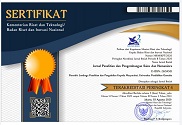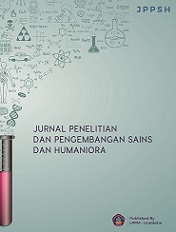Code Switching Used by Agnes Monica on Deddy Corbuzier’s Podcast
DOI:
https://doi.org/10.23887/jppsh.v6i2.43638Keywords:
Code-switching, Tipe code-switching, sociolinguistikAbstract
Code-switching is important and widely used, someone feels they have to change the language used in order to communicate well and smoothly between each other. The research was conducted with the aim to analyses the types of Code-Switching used in Video Podcasts on the Deddy Corbuzier Channel with Agnes Monica. The data analysis technique used is descriptive qualitative with in-depth analysis techniques about the types of Code-Switching. Some methods in collecting data such as, searching the video, watch the video carefully and analyze the code-swtching. After analyzing, the researcher found the 40 data and the researcher got Inter-sentential switching 12(30%), Intra-sentential switching 8(20%), Tag-switching 3(8%) and Intra-word Switching 17 (42%) and the Intra-word Switching is dominant type of code switching used by Agnez Monica on podcast Deddy Corbuzier in YouTube. The data with persentage 36% from 9 data.
References
Anandari, C. L., & Iswandari, Y. A. (2019). Extensive reading in Indonesian schools: a successful story. TEFLIN Journal, 30(2), 137–152. https://doi.org/10.15639/teflinjournal.v30i2/137-152.
Ansar, F. A. (2017). Code switching and code mixing in teaching-learning process. English Education: Jurnal Tadris Bahasa Inggris, 10(1), 29–45. https://doi.org/10.24042/ee-jtbi.v10i1.873.
Ashman, G., & Snow, P. (2019). Oral Language Competence: How It Relates to Classroom Behavior. American Educator, 43(2), 37–41. https://eric.ed.gov/?id=EJ1218776.
Asrial, A., Syahrial, S., Kurniawan, D. A., Subandiyo, M., & Amalina, N. (2019). Exploring obstacles in language learning among prospective primary school teacher. International Journal of Evaluation and Research in Education, 8(2), 249–254. https://doi.org/10.11591/ijere.v8i2.16700.
Benu, N. N. (2018). Code Switching in EFL Classroom (A Case Study at a State Senior High School in Kupang). Exposure Journal, 7(2), 150–160. http://download.garuda.kemdikbud.go.id/article.php?article=909144&val=8205&title=code swithing in efl classroom a case study at a state senior high school in kupang.
Bhatti, A., Shamsudin, S., & Said, S. B. M. (2018). Code-Switching: A Useful Foreign Language Teaching Tool in EFL Classrooms. English Language Teaching, 11(6), 93–101. https://eric.ed.gov/?id=EJ1179229.
Bialystok, E., McBride-Chang, C., & Luk, G. (2005). Bilingualism, language proficiency, and learning to read in two writing systems. Journal of Educational Psychology, 97(4), 580. https://doi.org/10.1037/0022-0663.97.4.580.
Bokamba, E. G. (1989). Are there syntactic constraints on code-mixing? World Englishes, 8(3), 227–292. https://doi.org/https://doi.org/10.1111/j.1467-971X.1989.tb00669.x.
Brix, T. J., Bruland, P., Sarfraz, S., Ernsting, J., Neuhaus, P., Storck, M., & Dugas, M. (2018). ODM Data Analysis—A tool for the automatic validation, monitoring and generation of generic descriptive statistics of patient data. PloS One, 13(6). https://doi.org/10.1371/journal.pone.0199242.
Bromberek-Dyzman, K., Jankowiak, K., & Chełminiak, P. (2021). Modality matters: Testing bilingual irony comprehension in the textual, auditory, and audio-visual modality. Journal of Pragmatics, 180. https://doi.org/10.1016/j.pragma.2021.05.007.
Cahyani, H., de Courcy, M., & Barnett, J. (2018). Teachers’ code-switching in bilingual classrooms: exploring pedagogical and sociocultural functions. International Journal of Bilingual Education and Bilingualism, 21(4), 465–479. https://doi.org/10.1080/13670050.2016.1189509.
Charalambous, A. C. (2011). The Role and Use of Course Books in EFL. Online Submission, May.
Fathimah, D. N. (2016). Why Is There Code Switching in Efl Classroom? : a Case Study in a Vocational School in Cimahi West-Java. Jurnal Pendidikan Bahasa Dan Sastra, 16(1), 70. https://doi.org/10.17509/bs_jpbsp.v16i1.3063.
Gunantar, D. A. (2016). the Impact of English As an International Language on English Language Teaching in Indonesia. Language Circle: Journal of Language and Literature, 10(2), 141–151. https://doi.org/10.15294/lc.v10i2.5621.
Hashim, H. U., & Yunus, M. M. (2018). English as a Second Language (ESL) Learning: Setting the Right Environment for Second Language Acquisition. Tadris: Jurnal Keguruan Dan Ilmu Tarbiyah, 3(2), 207. https://doi.org/10.24042/tadris.v3i2.2941.
Hitchcock, M., & Dann, G. M. S. (1998). The Language of Tourism: A Sociolinguistic Perspective. In The Journal of the Royal Anthropological Institute (Vol. 4, Issue 3). Cab International. https://doi.org/10.2307/3034171.
Jiang, Y. L. B., García, G. E., & Willis, A. I. (2014). Code-mixing as a bilingual instructional strategy. Bilingual Research Journal, 37(3), 311–326. https://doi.org/10.1080/15235882.2014.963738.
Kasim, U., Yusuf, Y. Q., & Ningsih, S. R. J. (2019). The types and functions of code switching in a thesis defense examination. EduLite: Journal of English Education, Literature and Culture, 4(2), 101–118. https://doi.org/10.30659/e.4.2.101-118.
Kuzyk, O., Friend, M., Severdija, V., Zesiger, P., & Poulin-Dubois, D. (2020). Are there cognitive benefits of code-switching in bilingual children? A longitudinal study. Bilingualism: Language and Cognition, 23(3), 542–553. https://doi.org/10.1017/S1366728918001207.
McKay, S. L. (2003). Eil Curriculum Development. RELC Journal, 34(1). https://doi.org/https://doi.org/10.1177/003368820303400103.
Moetia, M. (2018). Code mixing and code switching in the classroom interaction. English Education Journal, 9(2), 229–242. http://e-repository.unsyiah.ac.id/EEJ/article/view/11530.
Mustikawati, D. A. (2016). Code-Mixing and Code Switchingin The Process of Learning. Register Journal, 9(1), 24–51. https://doi.org/10.18326/rgt.v9i1.24-51.
Nishanthi, R. (2018). The importance of learning English in today world. International Journal of Trend in Scientific Research and Development, Volume-3(Issue-1), 871–874. https://doi.org/10.31142/ijtsrd19061.
Nurhamidah, N., Fauziati, E., & Supriyadi, S. (2018). Code-Switching in Efl Classroom: Is It Good or Bad? Journal of English Education, 3(2), 78–88. https://doi.org/10.31327/jee.v3i2.861.
Okal, B. O. (2014). Benefits of Multilingualism in Education. Universal Journal of Educational Research, 2(3), 223–229. https://doi.org/10.13189/ujer.2014.020304.
Paul, R. and J. J. (2006). Globalization and history of English education in Japan. Asian EFL Journal, 8(3), 1–298. https://www.academia.edu/download/30635077/September_2006_Proceedings_final920.pdf#page=259.
Pransiska, R. (2017). Benefits of Bilingualism in Early Childhood: A Booster of Teaching English to Young Learners. January 2017. https://doi.org/10.2991/icece-16.2017.68.
Puspawati, I. (2018). Teachers ’ Use of Code Switching in EFL Classroom and its Functions. Journal of Foreign Language Teaching and Learning, 3(1), 73–74. https://doi.org/10.18196/ftl.3128.
Puspitasari, R. D., & Dewanti, A. (2020). Code switching in Sarah Sechan talk show on NET TV. Utopía y Praxis Latinoamericana: Revista Internacional de Filosofía Iberoamericana y Teoría Social, 1, 462–472. https://dialnet.unirioja.es/servlet/articulo?codigo=7411415.
Putri, D. E., Putri, K. H., & Putri, E. Y. (2017). Language and Gender : a Conversation Analysis in the Difference of Language Related To Gender. Proceedings of ISELT FBS Universitas Negeri Padang, 5, 21–26. http://ejournal.unp.ac.id/index.php/selt/article/view/8029.
Rabiah, S. (2018). Language as a Tool for Communication and Cultural Reality Discloser. 1–11. https://doi.org/10.31227/osf.io/nw94m.
Reyes, I. (2004). Functions of code switching in schoolchildren’s conversations. Bilingual Research Journal, 28(1), 77–98. https://doi.org/10.1080/15235882.2004.10162613.
Sadiku, L. M. (2015). The Importance of Four Skills Reading, Speaking, Writing, Listening in a Lesson Hour. European Journal of Language and Literature, 1(1), 29. https://doi.org/10.26417/ejls.v1i1.p29-31.
Selivanova, O. G., Gromova, C. R., & Mashkin, N. A. (2018). Improving student motivation for learning the second foreign language. XLinguae, 11(1), 218–229. https://doi.org/10.18355/XL.2018.11.01.18.
Sharma, C., & Puri, S. R. (2020). The importance of four skills in English education. The Genesis, 7(4), 33–36. https://doi.org/10.47211/tg.2020.v07i04.007.
Siddiq, R. A., Kustati, M., & Yustina, L. S. (2020). Teachers’ code mixing and code switching: insights on language barriers in efl classroom. Al-Ta Lim Journal, 27(1), 80–91. https://doi.org/10.15548/jt.v27i1.606.
Sigalingging, R. H. (2020). An Analysis Of Using Code Mixing On Felicya Angellista’s Video Youtube Channel. Universitas HKBP Nommensen.
Sinaga, C. R., & Hutahaean, D. T. (2020). An Analysis of Code Switching Used by Reza Arap on Deddy Corbuzier’s Youtube Channel. JETAFL (Journal of English Teaching as a Foreign Language) ISSN: 2459-9506 An, 6(3), 31–47. https://ejournal.uhn.ac.id/index.php/jetafl/article/view/95.
Siregar, M. A., & Hariani, S. (2018). Code-Mixing and Code Switching in Wylvera W.’s Novel Geranium Blossom: Saat Jarak Menguji Cinta: Their Types and Reasons. KnE Social Sciences, 461-472. https://knepublishing.com/index.php/Kne-Social/article/view/1956.
Suganda, L. A., Loeneto, B. A., & Zuraida, Z. (2018). Teachers’ Use of Code Switching in An English as a Foreign Language Context in Indonesia. Script Journal: Journal of Linguistic and English Teaching, 3(2), 111. https://doi.org/10.24903/sj.v3i2.202.
Waris, A. M. (2012). Code switching and mixing (Communication in Learning Language). Jurnal Dakwah Tabligh, 13(1), 123–135. https://journal3.uin-alauddin.ac.id/index.php/tabligh/article/view/299.
Wiraputri, N. M. D. Y., Sulatra, I. K., & Putra, I. G. W. N. (2021). Code switching found in cinta laura’s video on her instagram tv. Journal of Language and Applied Linguistics, 2(2), 228–237. https://doi.org/10.22334/traverse.v2i2.49.
Wirhayati, & Safitry, H. (2020). Code-Mixing And Code-Switching In Teaching Listening Skills To Intermediate 3 Students At Lbpp Lia Bekasi. Journal of Linguistics and Applied Linguistics, 2(1), 113–122. https://doi.org/10.32493/ljlal.v2i2.9512.
Downloads
Published
Issue
Section
License
Copyright (c) 2022 Ni Komang Rapini

This work is licensed under a Creative Commons Attribution-ShareAlike 4.0 International License.
Authors who publish with the Jurnal Penelitian dan Pengembangan Sains dan Humaniora agree to the following terms:
- Authors retain copyright and grant the journal the right of first publication with the work simultaneously licensed under a Creative Commons Attribution License (CC BY-SA 4.0) that allows others to share the work with an acknowledgment of the work's authorship and initial publication in this journal.
- Authors are able to enter into separate, additional contractual arrangements for the non-exclusive distribution of the journal's published version of the work (e.g., post it to an institutional repository or publish it in a book), with an acknowledgment of its initial publication in this journal.
- Authors are permitted and encouraged to post their work online (e.g., in institutional repositories or on their website) prior to and during the submission process, as it can lead to productive exchanges, as well as earlier and greater citation of published work. (See The Effect of Open Access)









